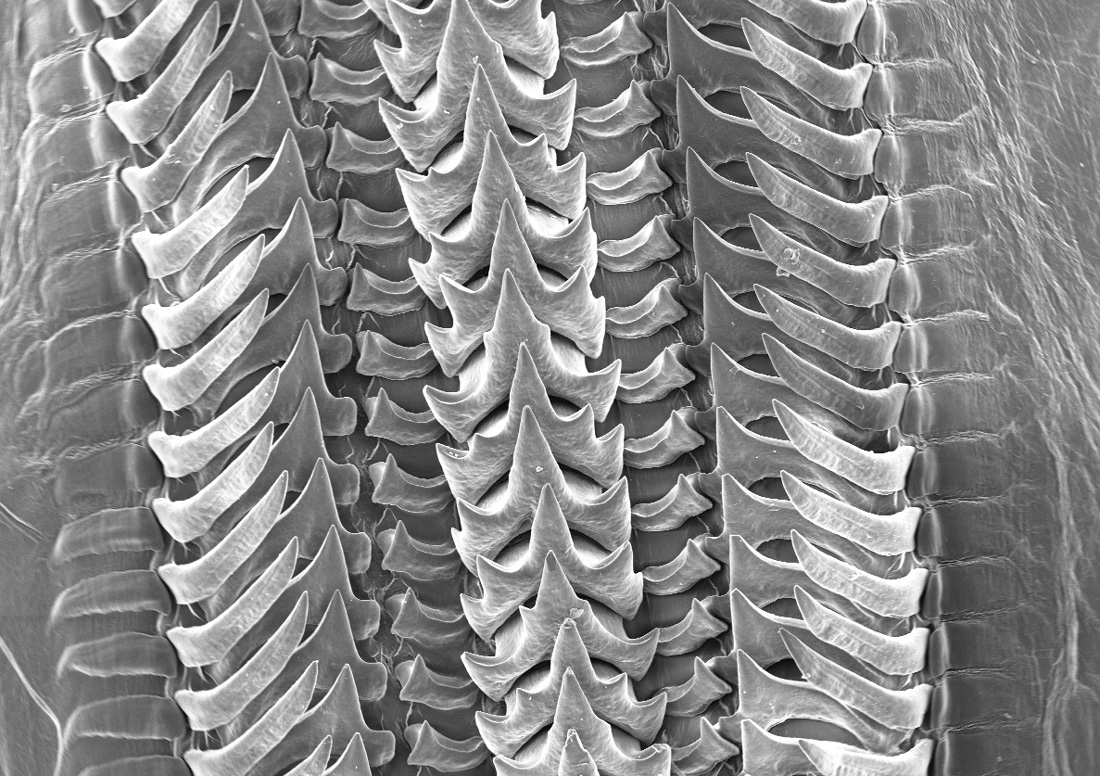
Honorable Mention: Octo-chainsaw
Charles E. Schmidt College of Science
Did you know that octopuses come equipped with their own tiny chainsaw? Pictured is a scanning electron microscope image at 54X magnification of the radula of a common octopus (Octopus vulgaris). The radula is a structure made of chitin supporting hundreds of teeth. This octopus has seven pointy teeth across each transverse row in its radula, with the central, rhachis tooth being the most prominent. The radula is used to grind up food, with the "chainsaw" moving backward like a conveyor to pass food into the throat. The "chainsaw" can also move forward to allow older, worn-down teeth to be absorbed while new teeth form at the back! Radulae are also important in species identification. Similar to dental records being unique to a person, radular morphology is unique to octopus species. Octopus species often look alike and live in the same areas, which makes telling them apart tricky. As my research focuses on identifying these hard-to-discern species, I am using their unique radulae to help in the process. Imaging was performed using a scanning electron microscope at the FAU High School Owls Imaging Lab.